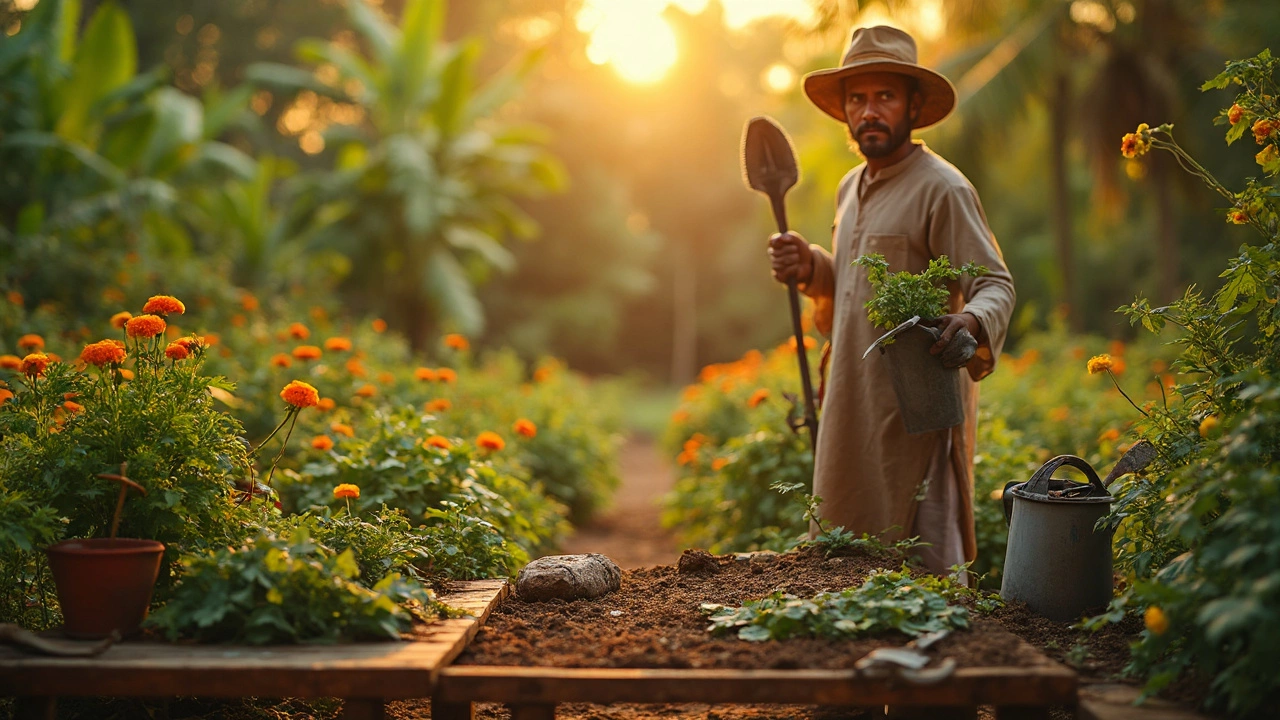Dig into the must-have gardening tools that make planting, digging, and pruning way easier. This article breaks down the top nine tools every gardener should own, whether you’re growing veggies or flowers. You’ll find out what each tool does and why it matters. Tips and real-life tricks will help you use them like a pro. Get the scoop before heading to the garden center.
Beginner Gardener: Your No-Nonsense Guide to Growing Things in India
Being a beginner gardener, someone just starting to grow plants at home, whether on a balcony, terrace, or small plot. Also known as new gardener, it means you’re learning by doing—not by reading books or following trends. You don’t need perfect soil, fancy tools, or a green thumb. You just need to pay attention. Most failures in early gardening come from trying to do too much too soon. The truth? The best beginner gardeners aren’t the ones with the most plants—they’re the ones who watch, wait, and adjust.
What helps most is understanding what’s around you. In India, the sun doesn’t play nice. It’s harsh, especially in the afternoons. That’s why so many new gardeners lose plants they thought were tough. A balcony garden, a small growing space on a balcony or terrace, often used for herbs, flowers, or veggies in cities isn’t just a trend—it’s a practical solution for people with little land. But it needs the right setup. You can’t just stick a pot anywhere. Direction matters. South-facing balconies get the most sun. North-facing ones stay shady. Pick plants that match the light you actually have, not the ones you saw on Instagram.
Soil is another big one. If your soil feels like cement, you’re not alone. Many Indian gardens have dense, clay-heavy dirt that doesn’t drain. The fix isn’t expensive. You don’t need to buy fancy mixes. Just add compost, rotted organic matter that feeds soil and improves its structure. It’s cheap, easy to make at home, and works better than most store-bought products. You can start with kitchen scraps—coffee grounds, vegetable peels, eggshells—and turn them into black gold over a few months. That’s not magic. That’s biology. And it’s the real secret behind healthy plants.
And then there’s the plants themselves. You don’t need to chase exotic flowers. Focus on what survives here. low maintenance plants, species that need minimal watering, pruning, or attention once established like basil, marigolds, or snake plants are your best friends. They don’t scream for help. They just grow. If you’re not sure where to start, pick one plant that blooms all year, like a zinnia or portulaca. Watch how it reacts to rain, sun, and heat. That’s your real training.
You’ll make mistakes. Your basil will wilt. Your tomatoes might get eaten by rabbits. Your drip system might clog. That’s normal. Every gardener here has been there. The difference between someone who quits and someone who keeps going isn’t talent—it’s curiosity. Ask why a plant droops. Check the soil before watering. Notice which plants come back after monsoon season. Those small habits build real skill over time.
This collection of posts isn’t about theory. It’s about what actually works for people in India right now. You’ll find guides on fixing dense soil, choosing the right balcony spot, keeping drip lines from clogging, and picking plants that don’t die in 3 weeks. No fluff. No jargon. Just clear, practical steps from people who’ve tried it and lived to tell the story. Whether you’re growing herbs on a windowsill or trying your first vegetable patch, you’ll find something that fits your space, your time, and your level. Start small. Stay curious. And let the plants teach you.
